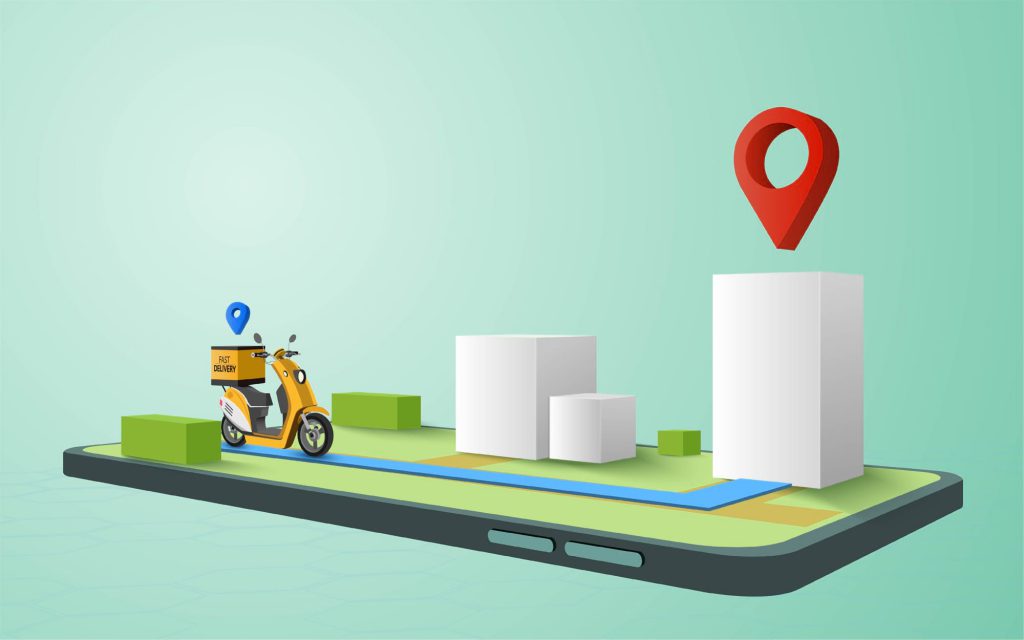Monitor your fleet with Google Maps and increase the efficiency of your business
For a company with mobile staff to be fully competitive, it must track all of its resources in real time and with precision. It is the only way of guaranteeing the improvement of their efficiency and the speed of reaction to unexpected circumstances (for example, modifying routes to respond to emergencies or to prevent troublesome traffic issues). One of the best allies for companies to reach this objective is the Google Maps Platform localisation suite and its multiple applications in business tools.

Geolocation tools have truly transformed businesses that have opted for them. The reason is clear: they are systems that offer essential information in real time that was previously only available after the fact.
Thanks to these tools, companies collect high value data about their resources in real time:
- Precise real-time location
- Routes for each journey and time taken
- Habitual journey patterns
This and other additional information enables companies with field or mobile staff to know the condition of their resources, optimising their preventive maintenance.
The world’s most widespread geolocation and resource tracking solution is Google Maps, which adapts to all types of companies: from micro SMEs to large corporations that have to manage and geolocate an enormous number of resources in real time.
4 tips to improve the monitoring of your resources with Google Maps Platform
Google Maps Platform is the geolocation suite with the largest presence in the world for the tracking of resources (for example, fleet vehicles). Some compelling reasons for this lead are:
- Simplification and unification of different tools (Maps, Routes and Places) and API in one platform.
- Integration of a critically important base of geographical information (more than 200 countries) and roads (more than 64 million km).
- Incorporation of advanced technologies of wireless connectivity and Internet of Things.
- High precision information about locations and in real time
- Flexible planning of routes according to multiple criteria: distance, time, etc.
- Cloud solution that can be used in numerous environments and devices.
- Highly active community of users that update the data regularly (25 million daily updates).
In this post we offer 4 tips to optimise the monitoring of your resources with Google Maps Platform:
1. Combine the functionalities of Maps, Routes and Places to monitor resources
These tools from Google Maps Platform include advanced features that enable mobile resources to be located in real time, to know their precise location at any time and the journey history.
The combination of features of Google Maps, Routes and Places enables companies to plan complex routes, quickly and accurately locate their resources, control their fleets or even find out the traffic conditions in real time to create alternative itineraries.
The different features of Google Maps Platform tools for the tracking/monitoring of resources include the following:
- Geolocation. Shows where the resources and/or devices are located with precision and in real time, whether in indoor or outdoor locations thanks to mobile phone towers and Wi-Fi networks.
- Geocoding. Converts addresses entered onto the platform into geographic coordinates in both directions.
- Distance Matrix. Calculates the duration and distance that will be covered on journeys, taking into account up to 25 route points.
- Directions. Calculates the duration of a journey (in progress or planned), taking into account real-time traffic information.
- Roads. Determines and traces the route that a resource has followed and locates the closest roads at each point of the journey.
2. Optimise routes in complex itineraries
With Google Maps Platform, an itinerary is not just going from point A to point B. This geolocation solution enables journeys to be planned which include various points (up to 25), and also display the distances (partial and total) and the estimated journey time according to updated information.
In this sense, having updated traffic information and estimated information based on usual patterns is of a great help for fleet management. This information enables drivers to avoid traffic jams, increase the productivity of staff who are travelling, optimise vehicle maintenance and reduce the delays to delivery commitments to a bare minimum.
3. Monitor and view connected resources
Google Maps Platform also facilitates the tracking and monitoring of resources with the Internet of Things (IoT) if it has their exact location, regardless of whether they are located in the company itself, in faraway areas or even in multiple locations.
Thanks to these features, companies can also control and improve deliveries remotely from the assembly chain to the final destination. Another interesting feature is the possibility of geolocation on devices without the need for GPS or specific hardware, so users can find out exactly where their resources are.
4. Use precise location data throughout the world
As important as geolocation is location. Google Maps Platform offers geographical data of more than 200 countries in an enormous amount of detail. It is extremely useful information, for example, if we want our delivery vehicles to move around the entire EU territory and neighbouring countries, or even if we want to locate new resources with the Internet of Things in distant countries.
This location data affects both our exterior and interior tracking. The technology from Google Maps Platform uses both mobile phone towers and Wi-Fi networks to offer the most precise data about the location of the resources.
Intelligence Partner, experts in Google Maps Platform
At Intelligence Partner, as a Google Cloud Premier Partner, we help you to develop a geolocation strategy based on Google Maps that provides new growth options for your business.
We have experience in optimising the use of all of the services provided by Google Maps that can be embedded in fully customised solutions and apps for our clients. Are you interested? Contact us without any obligation.


